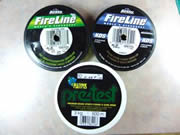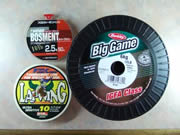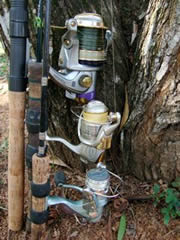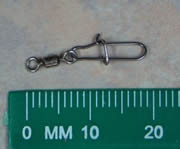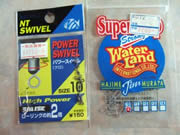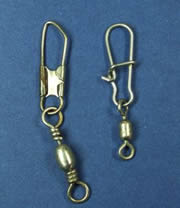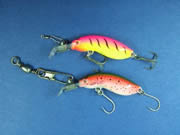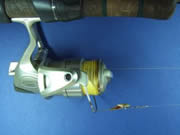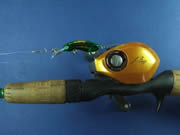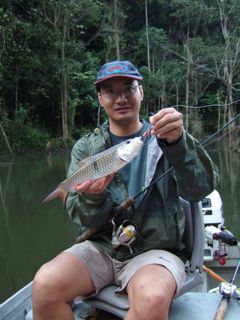
Light Tackle for Hampala Barb (Sebarau)
“What gear do I need?” is the common question I get when a newbie is joining us on a sebarau fishing trip. That question can easily spawn a long, long list of tackle, because sebarau fishing styles or systems can be extremely varied. It all depends on factors like location, habitat, and whether one is going for quantity or quality.
Using lures is the most effective method of catching sebarau. Therefore the type of lures we use will dictate the type of tackle we need. So when deciding what tackle we need for a trip we normally look at what sort of lures are needed that trip.
How we decide on the lures needed normally ends up in the decision of whether we want quantity or quality sebarau. Or both! If it’s both, it means we need to bring more tackle!
Another issue that also needs to be considered is the habitat of where we are fishing. Open and snag free habitat means light and fun gear is what can be used, whereas snaggy habitats require stout gear, strong line and leaders, especially if trophy sebarau are sought.
So where do we start? When I first got into the groove of catching sebarau my aim was to catch sebarau of any size. As long as I caught sebarau, size did not matter. It was quantity that I wanted, and to catch a quantity of sebarau during a fishing trip, the size of the lure mattered. Essentially the smaller the lure, the better.
Sebarau forage tends to be generally small fish and insects. Therefore using small and very small lures gets lots of strikes. In addition, the smaller gullible sebarau are also more likely to be duped into eating an artificial lure. Plus there are more of these naive little chaps wandering around that have not wised up to the cunning ways of the lure angler.
Therefore to cast small lures, the appropriate rod and reel is required to optimise the casting. Note that I use the word optimise. Any rod and reel can chuck out a small or very small lure, but to be efficient and do it with grace we need an appropriate rod and reel!
Very small lures in this case can be small spinners, spoons or crankbaits in the one to four gram range. Most anglers prefer to use spinning reels to cast out these lightweight sebarau attractors. In our country there are not that many casters who wish to cast such light lures, so finding a tackle shop that stocks a good spin rod for this task can take a bit of searching.
My ideal spin rod for this duty is probably a 6 foot 4-8lb class rod with a medium to fast action of good quality graphite. This kind of high graphite rod is crisp in action with a fast recovery giving good control of the lure placement. They are also nice and light, giving the angler the sensitivity to feel what’s happening on the other end of the line during lure retrieval. This type of rods can be found in the mid price range and up. The common low end rods in this line class range are normally floppy with a soft tip and midsection, and better suited for baitfishing.
The fishing mainline that would allow easy casting of these finesse lures needs to be thin and limp. A thick line would have a lot of resistance and limit the distance the lure can be cast. For monofilament nylon or fluorocarbon mainlines, the 3 kg (6 lb) line class would probably give the best balance of line thickness and strength. Using finer lines would give better casting distance, but the lower line strength could possibly snap if a vicious sebarau were to be hooked on. The shock factor of a sebarau hit can result in line breakage even with a low drag setting. Therefore, a compromise between line thickness and strength is sought.
For those who prefer to use the superlines, braided or coated, the line thickness is less of an issue. However at lower line classes the difference between line thickness of monofilament and superlines reduces significantly compared to higher line classes. Again 3 kg (6 lb) is a good line class to use for superlines. Being thinner than 3 kg mono, the same line class braid will cast further. Higher line classes of 4 kg or even 5 kg braid can be used for casting too. Some anglers go as low as 2 kg superlines as superlines tend to be well under rated and at light classes often break well above double their line class.
It is essential to use a heavier mono leader for both types of mainlines. For the monofilament mainline, the mono leader will provide abrasion resistance against the structure that the sebarau will try to rub against during the fight to dislodge the lure. I learnt the hard way when I did not use an abrasion leader when using 6 lb mono straight to the lure, losing several spinners on one trip. Even the small sebarau when it hits the lure will dive back into the sticks if it can, and when the line is rubbed against the structure under tension, it will snap.
Superlines have low impact strength and the mono leader is used as a shock leader to give some stretch to protect the mainline from the jarring line breaking shocks. Additionally, the mono leader is less visible in the water than superlines. Thus using a mono leader should have less adverse visual line visibility than connecting a superline directly to the lure.
A 5 kg or 6 kg (10-12 lb) mono leader made from nylon or fluorocarbon is a good option for the leader strength. It gives sufficient abrasion resistance for light line tension and is flexible enough not to dampen the action of small lures.
The spinning reels used should be durable and be able to take the constant opening and closing of the bait arm and the wear and tear of constant cranking without going the reel heaven too soon. There also is an optimum size of the spin reel to be considered too.
A large heavy reel (+300 gms) is tiring for continuous casting and also would make the casting outfit less sensitive to any vibration at the other end of the line. A small reel is light and is less fatiguing. However the smallest spin reels are not the best tool for lure casting. The common misconception that a small reel is best for casting small lures is not true.
The smallest spin reels have small spool diameters. This means the line comes off the spool in smaller loops and more small loops equals more casting resistance and line twist. Therefore from the point of view for casting efficiency, the largest possible spool diameter is better. But then spin reels with large diameter spools are excessively heavy which is not what we want. Again we have to settle for a compromise and go for a mid size freshwater spin reel for optimum casting performance and ergonomics.
These mid sized reels are less than 300 gms, normally from around 250-270 gms. Interestingly the smaller reels are not significantly lighter. For some model types they are the same weight! So there is actually no benefit in choosing the smaller version.
There are not many baitcasters on the market that can easily cast the light lures. The few that are available are known as “finesse” baitcasters as they have been designed to cast light lures, and they do it very well. Sadly, they are very pricey. Thus the majority of anglers use spin gear to cast the really small lures.
If snaps and swivels are used to attach the small lures to the line, appropriate sized snaps and swivels should be used. Many a time I have seen anglers happily use a monstrous snap/swivel with small lures and wonder why they are not catching as many fish as the other guy. The difference in catch rate is normally because the “other guy” is using terminal tackle that balances with the size of the lure.
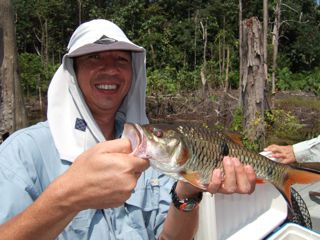 When using snaps and swivels, smaller is better. The lure’s profile is not significantly changed nor is the action dampened by the weight of the terminal. Look for the better quality snaps and swivels because light weight terminal tackle should also have sufficient strength to handle a larger than normal hook in the event such an occurrence occurs.
When using snaps and swivels, smaller is better. The lure’s profile is not significantly changed nor is the action dampened by the weight of the terminal. Look for the better quality snaps and swivels because light weight terminal tackle should also have sufficient strength to handle a larger than normal hook in the event such an occurrence occurs.
The swivel size is probably almost the smallest available, commonly denoted as size 10 or 12 and the small snap would be about 12 mm in length. A snap with a round end is required to allow the lure to swim true and give the most action. Snaps with a sharp kink at the end should be avoided as the sharp kink jams the lure movement. In addition the kink is also often offset and this affects the towing balance of the lure, and may cause the lure to swim to one side or spin, especially when swum at high speeds.
Tackling sebarau with this type or size of tackle we have discussed about is ideal when casting the ultra light lures and even light lures. It is light and can be cast for long periods of time throughout the day without much fatigue. It is suitable for targeting small sebarau in most waters or when fishing in snag free water for sebarau of “any” size.
This is the sort of tackle I normally bring when looking for the light weight sebarau, especially when I am looking for quantity or know the waters fished might be difficult. There may be a few sebarau there, though normally small, can be fussy, wanting only small lures. It is also good fun gear to tackle these small sebarau.
Conservation
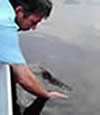
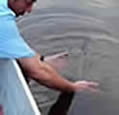
We need to protect and conserve our resources by practising catch and release of our sportfish and protecting the habitat of our fishes.
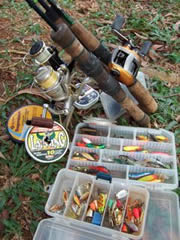
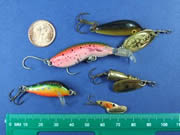 Small lures catch hampala barbs in quantity, but most of the catch will be small.
Small lures catch hampala barbs in quantity, but most of the catch will be small.